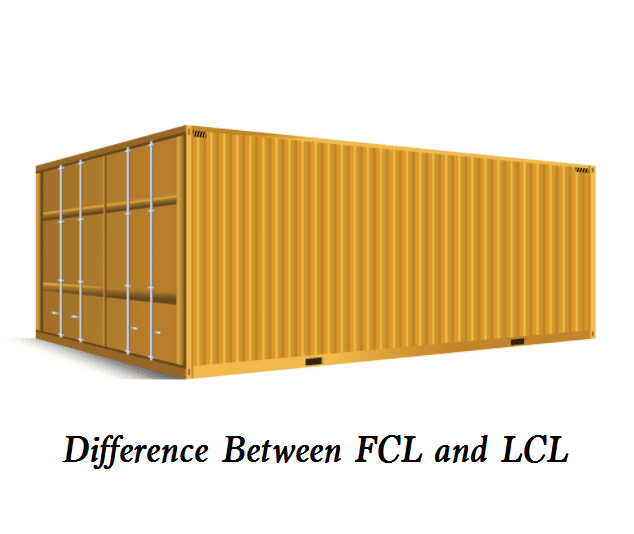What are Full Container Load and Less Than Container Load? How to distinguish them and determine whether it is appropriate for goods to go through LCL or FCL? Today, we’ll get into the difference between LCL and FCL.

What is FCL (Full Container Load)?
FCL is a relative term for LCL cargo. There is only one consignor for a full container of goods to be transported to the port of destination, and one consignee is responsible for unpacking and receiving the goods. The consignor shall be responsible for packing, counting, stowing, and leading sealed freight. The unpacking of the whole container is generally handled by the consignee. However, the carrier may also be entrusted to unpack at the freight station. However, the carrier is not responsible for the damage and difference in the goods in the container. Unless the cargo proves that the damage is caused by the carrier’s accident, the carrier shall be liable for compensation. The carrier shall take the container as the delivery unit for the whole container. As long as the appearance of the container is similar to that of the receiving container and the lead seal is complete, the carrier has completed the responsibility of carriage. On the full container freight bill of lading, the clause “the consignor shall pack, count and seal with lead” shall be added.
What is LCL (Less Than Container Load)?
The relative term of full container cargo refers to small bills of goods less than one full container. This kind of goods is usually collected by the carrier separately and concentrated at the container freight station or inland station, and then two or more pieces of goods are assembled in one container. Similarly, the goods shall be unpacked and delivered at the container freight station or inland station at the destination. For this kind of goods, the carrier shall bear the packing and unpacking operations, and the cost of packing and unpacking is still collected from the cargo. The carrier’s responsibility for LCL goods is basically the same as that of traditional general cargo transportation. LCL can be divided into direct consolidation or transfer consolidation. Direct consolidation refers to that the goods in LCL containers are loaded and unloaded at the same port and are not unpacked before the goods arrive at the destination port, that is, the goods are at the same unloading port. The transportation period is short and convenient. Transshipment refers to that the goods in the same container are transported to different ports separately. Because transshipment flights such as unloading, unpacking, and cargo separation are required at the transshipment port, the time limit will be relatively slow.
The Difference Between Full Container Load and Less Than Container Load – FCL vs LCL
1) Form
LCL:
- One shipper corresponds to multiple receivers
- Multiple shippers correspond to one consignee
- Multiple receivers correspond to multiple receivers
FCL: - One factory (one shipper), one consignee at the same port of destination
- Multi factory goods, one consignee at the same port of destination
2) Process
- LCL cargo: after receiving such cargo, the carrier classifies it according to its nature and destination, and assembles the cargo with the same destination and nature into the same container for transportation.
- FCL cargo: the consignor is responsible for packing, counting, and filling in the shipping list, and the goods are sealed by the customs.
3) Delivery
- LCL: in the general foreign trade shipping process, if it is in the form of LCL, the goods can be directly transported to a designated warehouse, and the freight forwarder will arrange for us to load a container.
- FCL: there is an additional step of picking up the container. We need to pick up the container and come to our factory for loading. If the freight forwarding company does not provide us with customs declaration and container towing services, we need to find an agent to help us with customs declaration and trailer in advance.
4) Customs declaration
- LCL: because LCL is to collect goods in the designated warehouse in advance, the customs declaration materials need to be provided in advance and the customs declaration time should be reserved for the warehouse.
- FCL:
① One factory goods and one shipper: simple product name, tax refund or purchase a single – fast release rate
② Multiple declarations of goods from multiple factories: there is a purchase order + tax refund. If one of the orders is checked, it will also affect other goods. We have to wait for the unified release before we have a chance to ship
③ The same is true for LCL: there are many goods. One is that the container may be filled with self-owned documents for customs declaration, and the other is self-owned documents + payment. However, they are all declared together. As long as one of them gets quality inspection, it will also affect other goods. It is also necessary to wait until all the documents are released in a unified manner before there is a chance to ship.